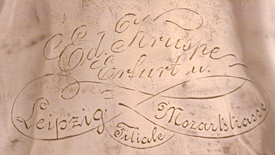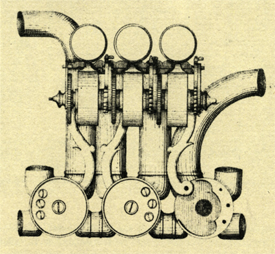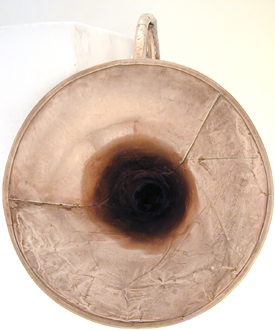| Label :
|
Ed. Kruspe Erfurt u. Leipzig Mozartstrasse Filiale |
||
|
Model:
|
Single |
||
|
Serial Number:
|
None |
||
|
Date of Manufacture:
|
1893 |
||
|
Key(s):
|
F and lower depending on terminal crook |
||
|
Valves:
|
3 rotary with adjustable springs |
||
|
Bore:
|
ca. 11.45 mm |
||
|
Bell Flare:
|
very wide gusset |
||
|
Bell Throat:
|
ca. 7.0 cm. |
||
|
Bell Diameter:
|
30.5 cm. |
||
|
Base Metal:
|
Rose Brass |
||
|
Finish:
|
unlacquered |
||
| . (click on photos for larger view) |
|||
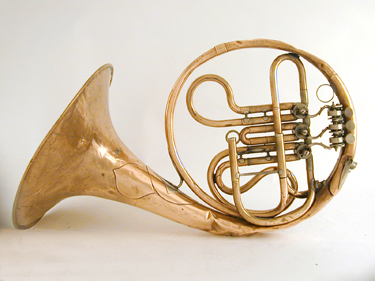 |
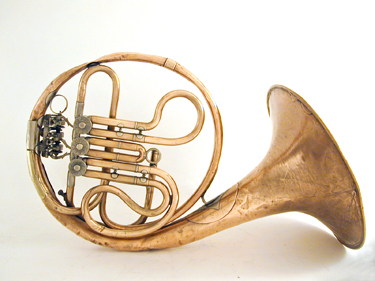 |
||
The well-used horn shown above is a single horn in pitched in F or E♭ depending on its terminal crook. It was made by the firm of Eduard Kruspe in Erfurt Germany, probably around 1893. The high copper content of its red brass makes it very susceptible to wear and damage as witnessed by many patches, dents, and wrinkles..[1] Two large patches on the outside of the bell are visible in the photo above left, including one under the bell brace. The horn is missing its original terminal crook(s) and its main tuning slide. |
|||
|
|||
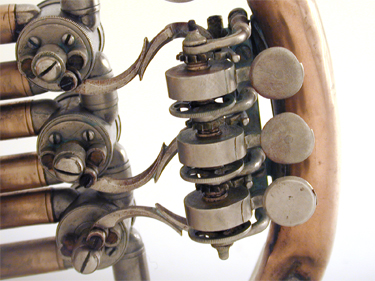 |
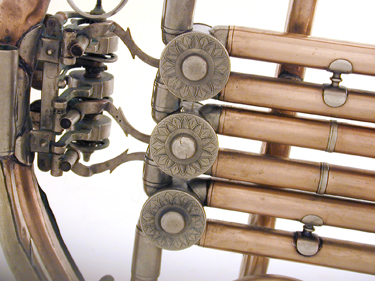 |
||
|
|||
